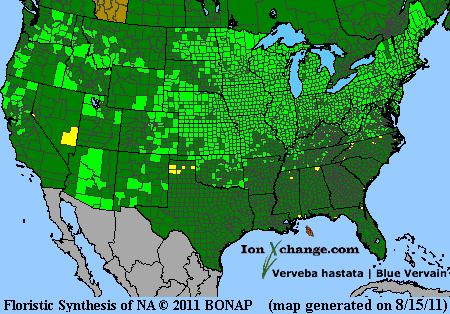 Loading... Please wait...
Loading... Please wait...- Home
- SEEDS
- SEED MIXES
- BUY PLANTS
- Info Request
-
Educational Videos
- Greenhouse Transplanting Demonstration
- Native Seed Cleaning demonstration at Ion Exchange Native Seed and Plant Nursery
- Attracting Butterflies
- Bidens - Bidens cernua Harvest Video
- Big Blue Stem Harvest
- Butterfly Milkweed Video
- Button Blazingstar - Liatris aspera Video
- Buttonbush - Cephalanthus occidentalis Video
- Canada Anemone - Anemone canadensis Harvest Video
- Cardinal Flower - Lobelia cardinalis Video
- Control Burn - Wildflower Field
- Cream Gentian - Gentiana flavida
- Culver's Root - Veronicastrum virginicum Video
- Cup Plant - Silphium perfoliatum Video
- Dormant Seeding | Planting
- Earthyman's Favorite Wildflowers Video
- Eco-Friendly Golf Course Seed Mix
- Floating Islands
- Fringed Loosestrife - Lysimachia ciliata Video
- Giant Yellow Hyssop - Agastache nepetoides Video
- Indiangrass - Sorghastrum nutans Video
- Iowa Prairie Partner Program
- Leadplant - Amorpha canescens (Potted) Video
- Meadow Blazingstar - Liatris ligulistylis
- Midland Shooting Stars - Dodecatheon meadii Video
- Native Plant Nursery Field Irrigation Experiment
- Nodding Onion - Allium cernuum Video
- Ohio spiderwort - Tradescantia ohiensis Video
- Old Man's Beard - Clematis virginiana blooms Video
- Oxeye Sunflower - Heliopsis helianthoides Video
- Prairie Spiderwort - Tradescantia bracteata
- Purple Coneflower - Echinacea purpurea Video
- Rain Garden or Water Garden Video
- Rattlesnake Master - Eryngium yuccifolium Video
- Riverbank Stabilization - Wetland Plants
- Rose Mallow - Hibiscus militaris Video
- Rosinweed - Silphium integrifolium Video
- Royal Catchfly - Silene regia
- Showy Tick Trefoil - Desmodium canadense Video
- Sneezeweed - Helenium autumnale Video
- Swamp Betony - Pedicularis lanceolata Video
- Swamp Milkweed - Asclepias incarnata Video
- Sweet Blackeyed Susan - Rudbeckia subtomentosa Video
- Tall Coreopsis - Coreopsis tripteris Video
- Urban Butterfly Garden
- Wild Bergamot - Monarda fistulosa Video
- Wild Geranium - Geranium maculatum Harvest
- Wild Goldenglow - Rudbeckia lanciniata Video
- Wild Petunia - Ruellia humilis Harvest Video
- Woodland Knotweed - Polygonum virginianum Video
- Yellow Coneflower - Ratibida pinnata Video
- Blog
- Resources
- Policies
Contact Us
Phone:
563-419-0837
or 563-535-7231
Email:
hbright@ionXchange.com
Browse Products
Add to Wish List
You Recently Viewed...
Our Newsletter
Product Description
Verbena is the Latin term for "sacred herb". Hastata is latin for "resembling a spearhead or arrowhead".
| Sun Exposure | Prairie, Savanna |
| Soil Moisture | Wet, Wet Mesic, Mesic |
| Bloom Time |
Summer, Fall July, August, September |
| Bloom Color | Blue |
| Max Height | 5 feet |
| Wetland Code | FACW+ |
| Germ Code | C(30) and D |
| Seeds Per Ounce | 93,000 |
Distinctive square stem, grows to 3 feet. Plant is very hairy normally. Flowers vary from blue-violet to rose and occur in spikes at the top of the plant from late June to September. Spikes can be 5 inches long and bloom from the bottom up. Found in fields, thickets and ditches throughout the Tallgrass region.
"The seeds of Blue Vervain were collected by some Native Americans , roasted and ground into a flour or meal. Central California Miwoks used the seed meal as an extensive food source. A tea made from the leaves was used as a remedy for stomach aches by northern plains Indians. The tops of this plant persist through the hard northern winter months and provide a limited amount of food to birds.
Edible Uses: Seed - cooked. The seed can be roasted and ground into a powder or used whole as a piñole. Pleasantly bitter, some of this bitterness can be removed by leeching the flour.
Medicinal Uses: "The leaves and roots are antiperiodic, diaphoretic, emetic, expectorant, tonic, vermifuge and vulnerary. The roots are more active than the leaves. The plant is used in the treatment of stomach aches, gravel, worms and scrofula, . An infusion of the roots, leaves or seeds has been used in the early stages of fevers. A snuff made from the dried flowers has been used to treat nose bleeds. Medicinal Uses: Unknown
Herbal Uses: Unknown














